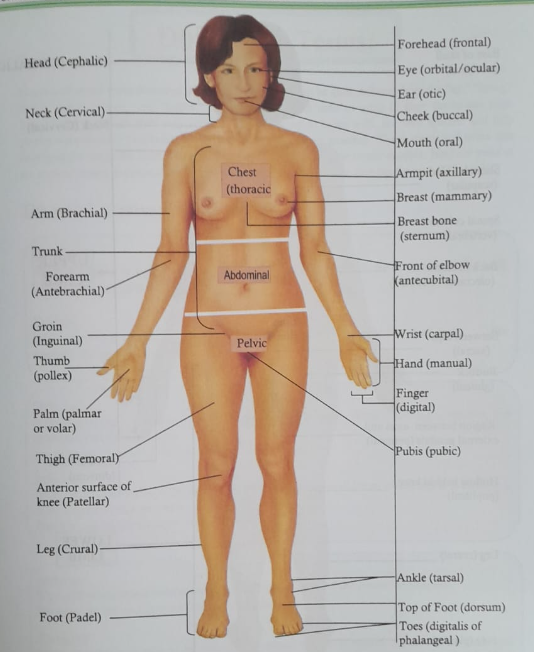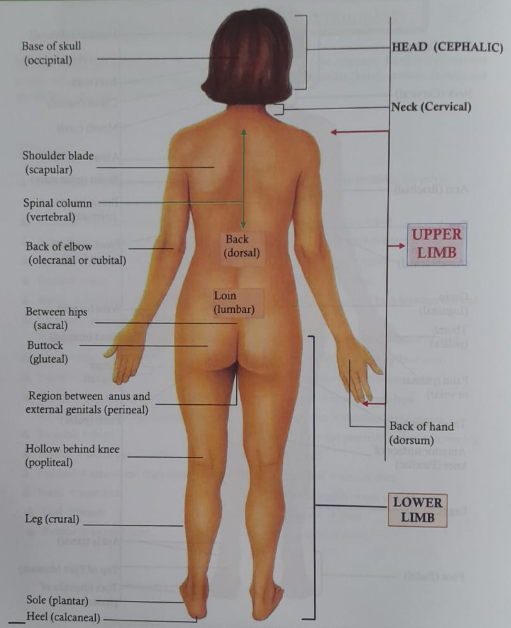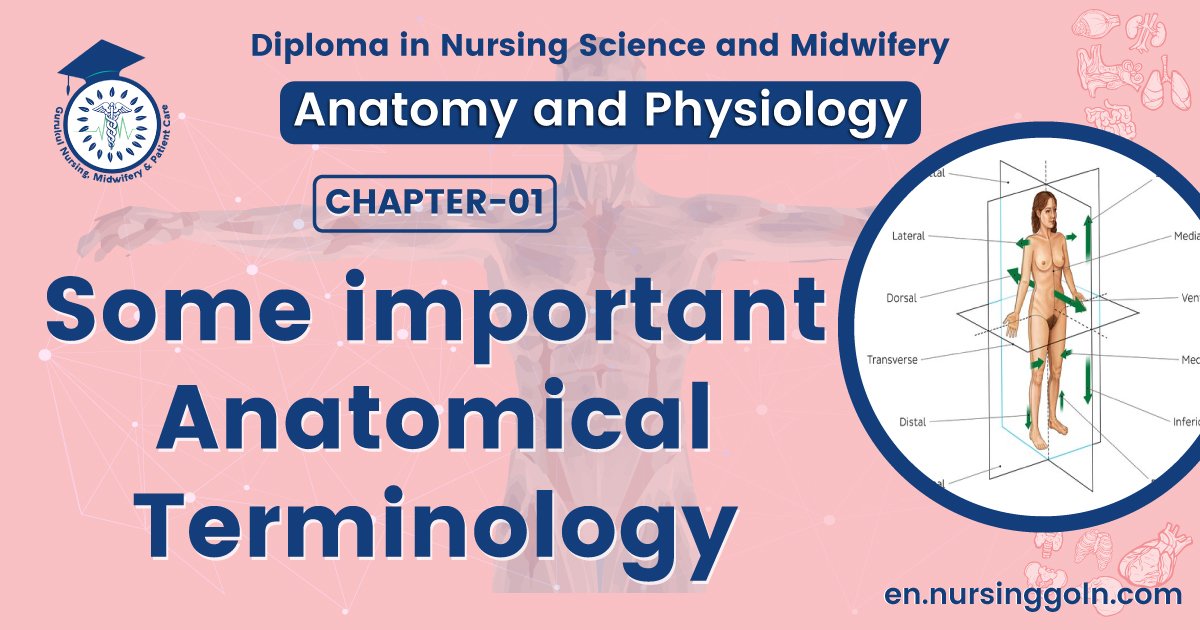Some important Anatomical terminology-The course is designed for the basic understanding of anatomical structures and physiological functions of human body, musculoskeletal system, digestive system, respiratory system; cardiovascular system; urinary system, endocrine system, reproductive system, nervous system, hematologic system, sensory organs, integumentary system, and immune system. The aim of the course is to acquire knowledge and skills regarding anatomy and physiology.
Some important Anatomical terminology

Regional names are terms given to specific regions of the body for reference. Examples of regional names include cranial (skull), thoracic (chest), brachial (arm), patellar (knee), cephalic (head), and gluteal (buttock) (See the figure #1.8, 1.9)
Others
Abdominal = anterior body trunk inferior to ribs
Pelvic = area overlying the pelvis anteriorly
Pubic = genital region
Stermal = breastbone area
Acromial = point of shoulder
Antecubital = anterior surface of elbow
Axillary = armpit
Brachial = arm
Buccal = cheek area Carpal wrist
Cervical = neck region
Calcaneal = heel of foot Cephalic head
Coxal = hip
Crural = leg
Digital = fingers, toes Deltoid curve of shoulder formed by large deltoid muscle

Femoral = thigh
Fibular = lateral part of the leg
Inguinal = area where thigh meets body
Nasal = nose area
Oral = mouth
Patellar = anterior knee
Tarsal = ankle region
Gluteal = buttock
Lumbar = area of back between ribs and hips
Occipital = posterior surface of head
Olecranal = posterior elbow area
Popliteal = posterior knee area
Sacral = area between hips
Scapular = shoulder blade region
Sural = the posterior surface of lower leg the calf

Vertebral = area of spine
Plantar = region sole of foot
Thoracic = chest
Umbilical = navel
Read more:
